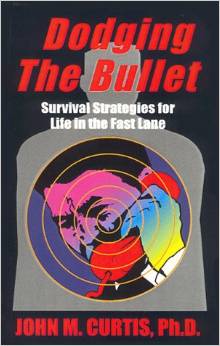Faced with growing competition in the Electric Vehicle [EV] industry, billionaire Tesla CEO Elon Musk deserves much of the credit in fueling the zero-emissions tailpipe industry. President Joe Biden, 80, slighted Musk when he hosted an EV summit at the White House Aug. 5, 2021, largely directed at Ford and General Motors [GM], encouraging more zero carbon vehicles for the nation’s larges carmakers. Ignoring Tesla was a big mistake for Biden, largely because GM and Ford, and every other EV automaker, relies on Tesla’s EV technology, especially when it comes to long-life lithium batteries made at Tesla’s Nevada Giga-factory. Beyond patented technology for EV vehicles, Musk deserves credit for pioneering the market in 2003 before anyone dreamed EVs could eventually dominate the car market. Now every major car company has zero-emission vehicles.
Tesla competed globally for market share with China BYD taking over EV sales in 2022, largely for its $25K price-point. Musk started with luxury vehicles with Tesla’s Model S in 2012, a sedan designed closely after Mercedes and BMW’s top-of-the-line vehicles, near $80,000 to $100,000 price-range. Musk knew in the beginning he’d try to break into the luxury car market with affluent buyers willing to sacrifice name-recognition and status to promote zero-emission vehicles. Musk defied expectations releasing the Model S to great fanfare in 2012, still the same overall design after 10 years of production. Musk followed the Model S with a smaller, more affordable Model 3 in 2017, hoping to appeal to the mid-priced car market. Most Model 3 didn’t come close to Musk’s promise of a $35K Tesla, selling in the $50K range, still pricing out many middle class EV buyers.
Catching up to the EV party, GM came out with its Bolt EV in Oct. 2016, in the $35K price range, beating Musk to the punch, but lacking the appeal of the more stylish Tesla models. Getting American consumers to jump on the EV bandwagon hasn’t been easy, no matter how much the government pushes. States like California have mandated EV auto sales in the state by 2035, expecting, in the new car market, to see internal combustion engines phased out. EV buyers have found out the truth about EV vehicles by personal experience, knowing that they cost comparable amounts to charge and do not get nearly the mileage rated by factories. Like most gasoline-driven vehicles, the government posts CAFÉ [Corporate Average Fuel Economy] standards, attest per vehicle to mileage ratings. When it comes to EV battery ranges they’re related to the size of the kilowatt hour [kwh] batteries.
EV CAFÉ standards take into account only traveling on flat ground to rate driving ranges, for lithium batteries raging in size, at least for Tesla, from 60 kwh to 100 kwh, ranging from 200 to 315 miles. But a 60 kwh battery weights 848 lbs compared to a 100 kwh battery at 1377 lbs, affecting CAFÉ standards. When you add to that that driving hills cuts battery rages by 25%, EV drivers needs to charge sooner when traveling up steep mountain grades. Some energy comes back when breaking downhill but the actual range still diminishes at least 20% when driving on hills. Musk has enjoyed the first-mover advantage, breaking into the market before the more recent spate of EVs hitting the car market. Musk must compete with VW, GM, Ford, Hyudai, KIA, all planning to release EV vehicles under $30K, something Tesla hasn’t done since releasing the first S vehicle in 2012.
Musk plans to announce a new Master Plan Part 3 on March 1, seven years after Master Plan Part Deux. Musk plans to announce Tesla’s most affordable model, designed to compete with GM, Ford and Hyundai. Unlike other EV carmakers, Musk prides himself on Tesla’s superior technology and designs, making the Tesla look a time-enduring status symbol for EV car buyers. Getting EVs down to an affordable price point is the biggest stumbling block to convincing the public to jump on board. Tesla no longer gives free charging to its customers, building out fast-charging stations around the country. White House officials no longer ignore Musk, asking the entrepreneur to allow other EV companies to make use of Tesla’s network of fast-charging stations. More available charging stations and a lower price-point would encourage car buyers to get off the fencs on EVs.
Musk’s Wall Street analysts and shareholders want to know that the company will compete ferociously in the new car market with more affordable, technologically superior vehicles. Musk hasn’t yet committed to a $25K to $30K Tesla, despite having the Chinese manufacturing cable of getting down his delivered prices as never before. Most consumers, if the price is right, would still prefer a Tesla over some other off-brand, if nothing else because they carry the status like no other EV vehicle. When Musk meets analysts and shareholder March 1, he’ll need play Apple Inc’s Steve Jobs, knowing how to hype his products to the detriment of the competition. Consumers see the logic in going with the tried-and-true technology, as long as it’s at an affordable price point. Continuing the zero tailpipe emissions revolution, Musk must lead the technology and make his new vehicles more affordable than ever.
About the Author
John M. Curtis writes politically neutral commentary analyzing spin in national and global news. He’s editor of OnlineColumnist.com and author of Dodging The Bullet and Operation Charisma.



